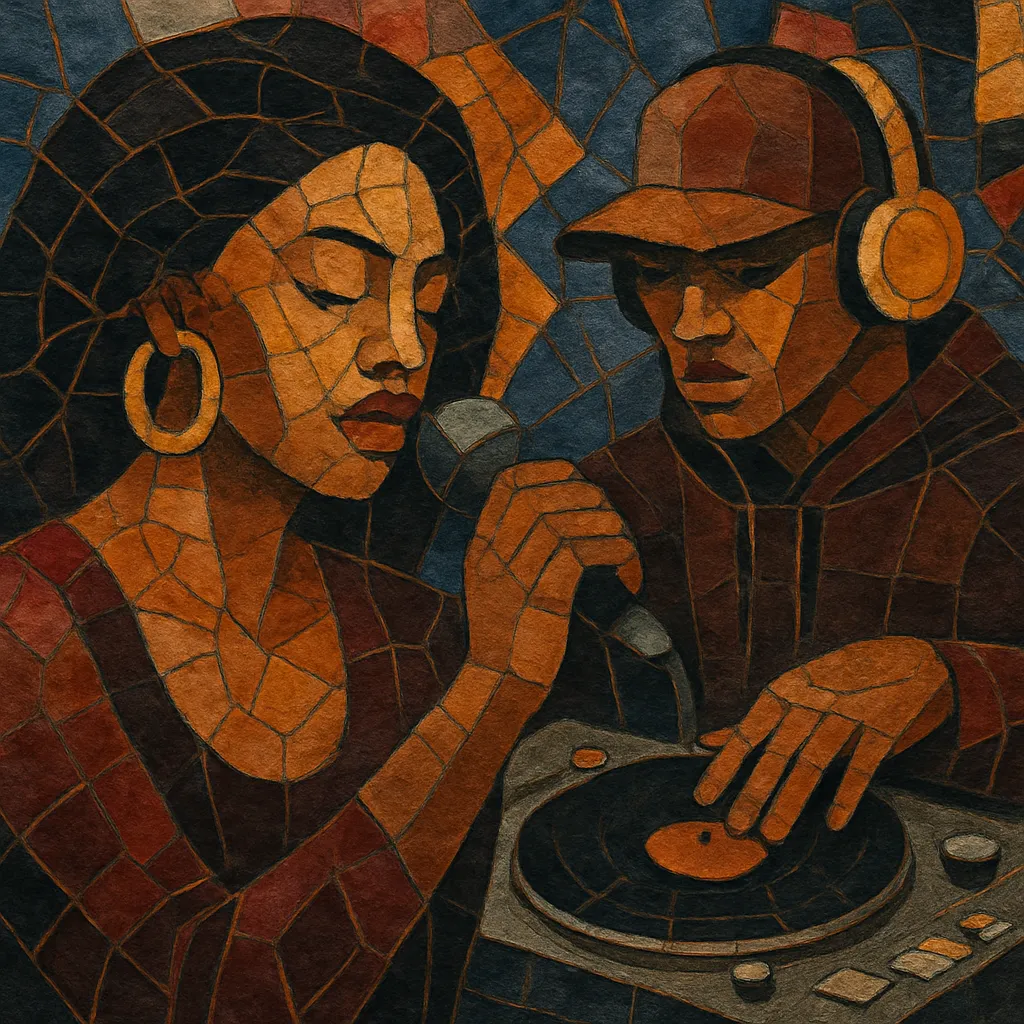
Hip hop soul is a fusion of hip hop production aesthetics with soulful, R&B-style lead vocals. It combines sample-based or programmed rap beats, hard snares and deep basslines with gospel-tinged melodies, rich harmonies, and emotive vocal delivery.
Emerging in the early 1990s, the style foregrounded sung hooks and verses over rhythms traditionally used for MCing, often adding rap features. It updated classic soul’s romantic and confessional themes for an urban soundscape, shaping the direction of mainstream R&B for decades.
Hip hop soul crystallized in the early 1990s United States as R&B singers began performing over hip hop beats. Uptown Records and Bad Boy Entertainment—spearheaded by Andre Harrell and Sean “Puffy” Combs—were pivotal incubators. Mary J. Blige’s albums What’s the 411? (1992) and My Life (1994) set the blueprint: gospel-informed vocals, confessional lyrics, and boom-bap drum programming with sampled textures. Jodeci’s rugged image and production similarly moved R&B away from the polished sheen of late new jack swing toward a grittier hip hop sensibility.
The sound quickly crossed into the pop mainstream. TLC fused edgy beats with harmonized hooks on CrazySexyCool (1994). Mariah Carey’s hip hop remixes (notably the 1995 Fantasy remix with Ol’ Dirty Bastard) normalized rap features on R&B/pop singles. Producers like Sean Combs, Chucky Thompson, and later Timbaland and Missy Elliott brought hard drums, sample chops, and innovative syncopations to R&B singers (Aaliyah, Ginuwine, and others), keeping soulfulness central while embracing street-oriented rhythms.
By the early 2000s, hip hop and R&B were deeply intertwined in radio formats and charts. Artists like Ashanti and Keyshia Cole carried the tradition—melodic confessionals over crisp, club-ready beats—with frequent rapper guest verses (e.g., Ja Rule’s duets). The style’s DNA spread across contemporary R&B, influencing writing, production choices, and the expectation of a sung hook in rap and a rap verse in R&B.
Hip hop soul’s template informed neo-soul’s hip hop-adjacent rhythmic pocket and later helped seed trap soul, which swaps boom-bap for trap percussion while retaining intimate, soul-rooted songwriting. Today, its influence is evident in melodic rap, modern R&B’s emphasis on groove-forward production, and the ubiquity of singer–rapper collaborations.

